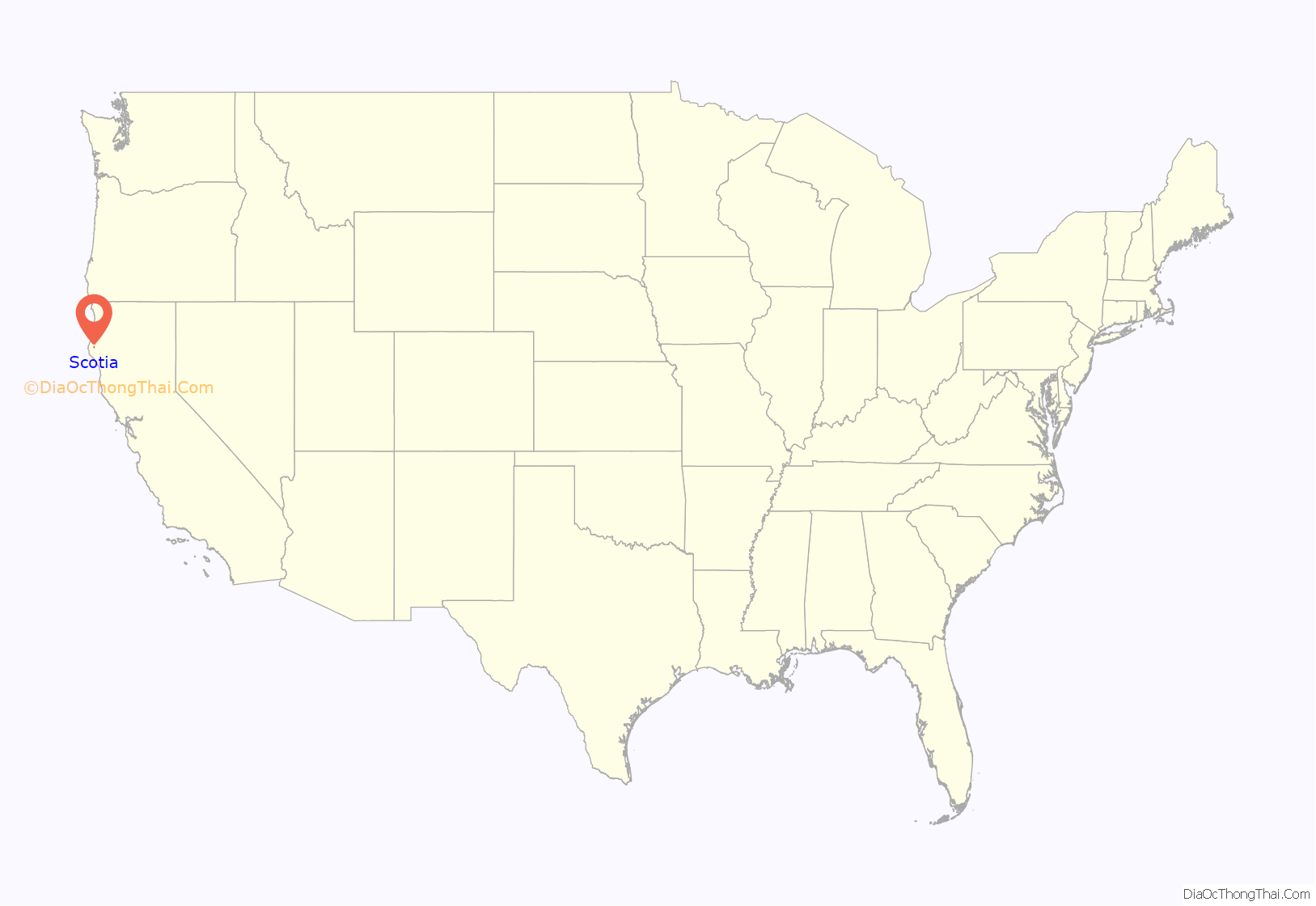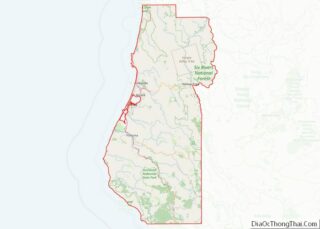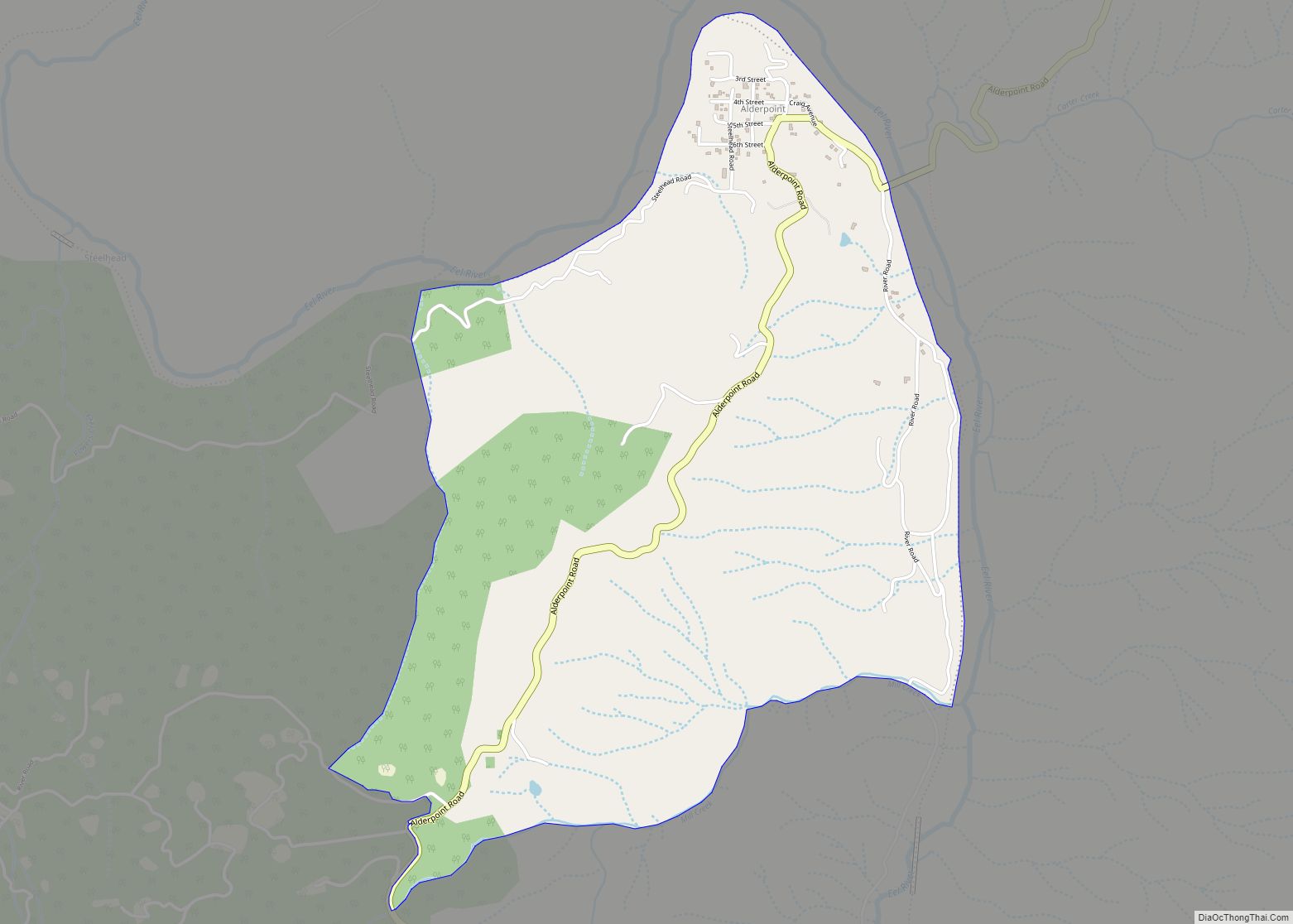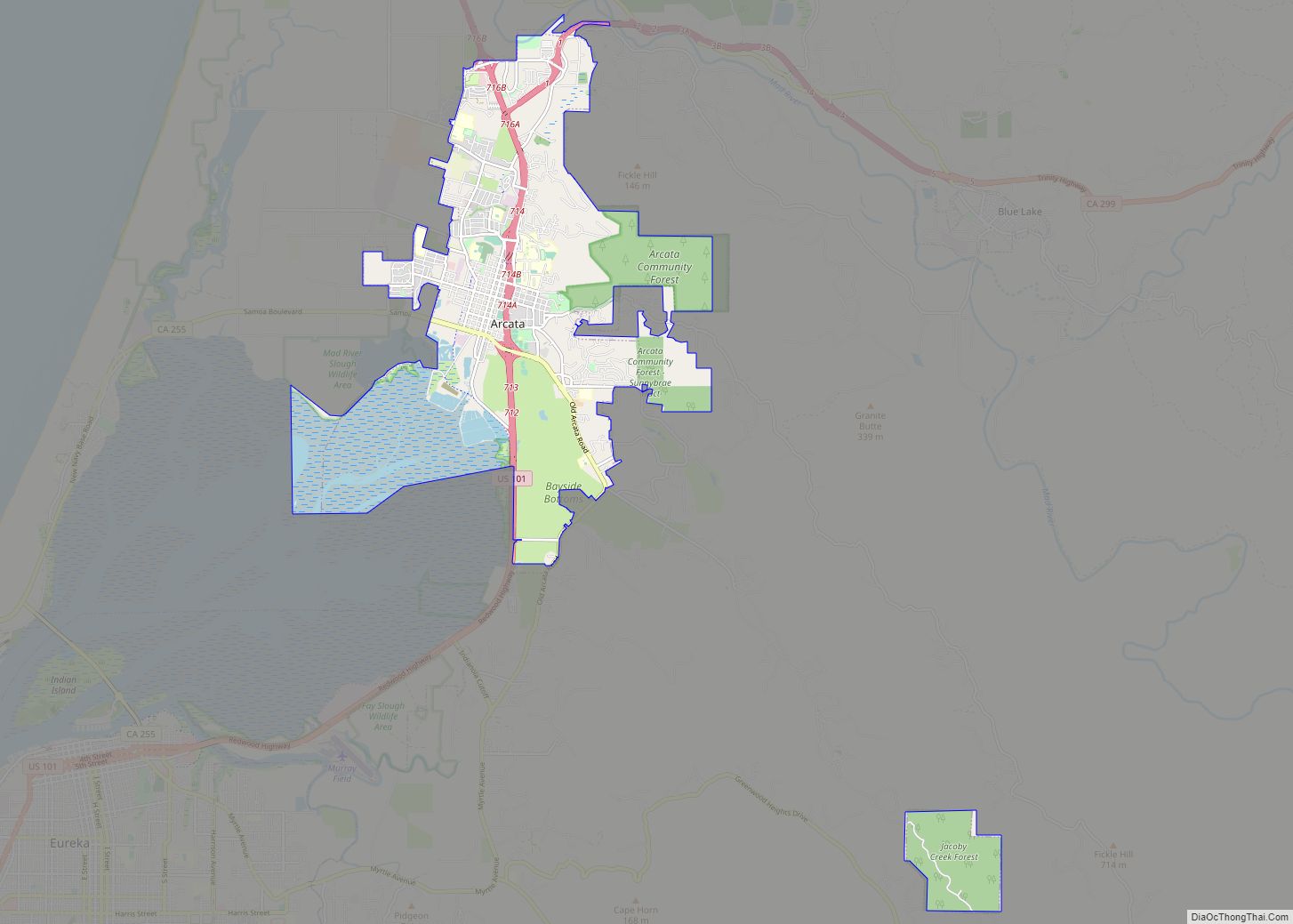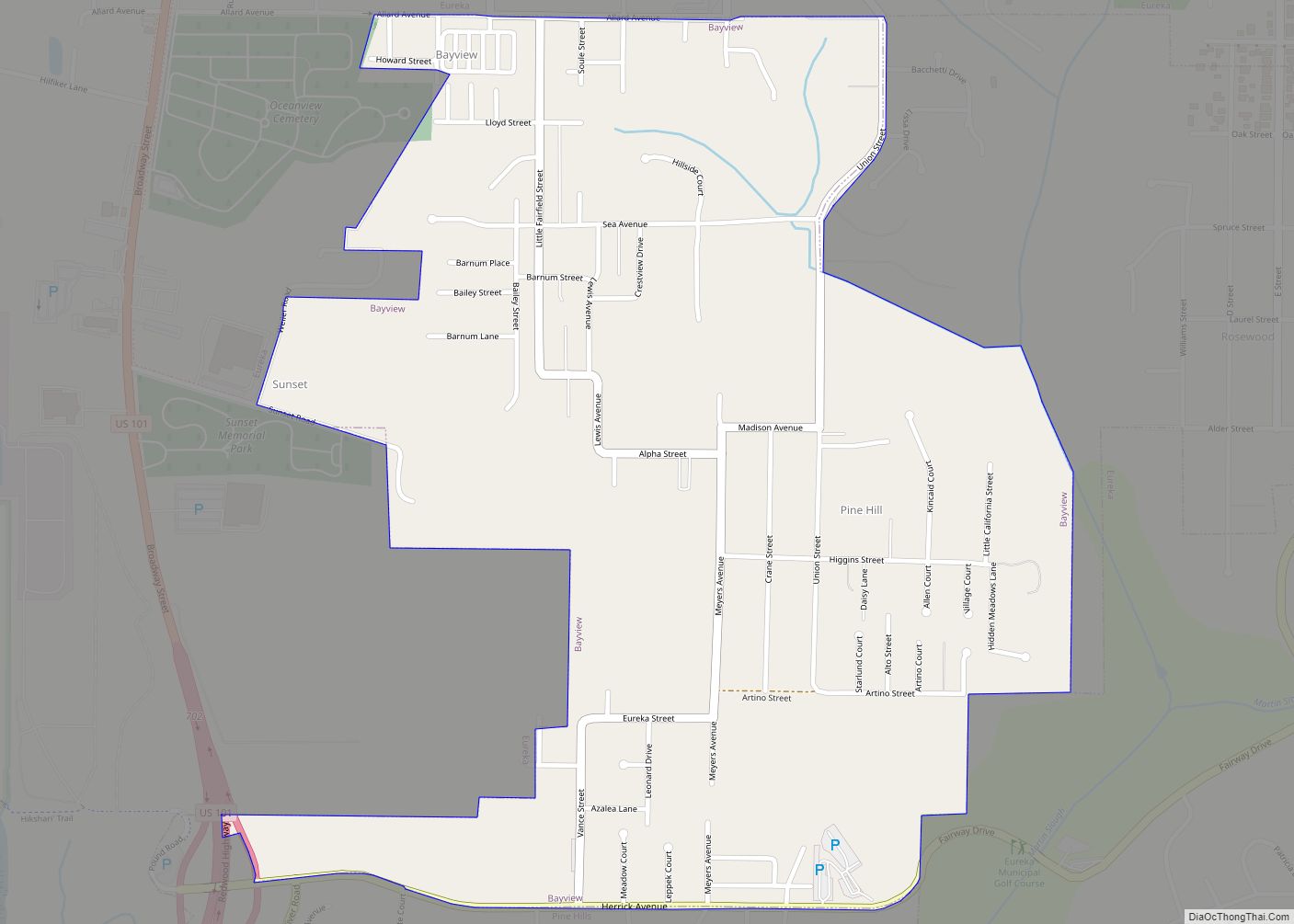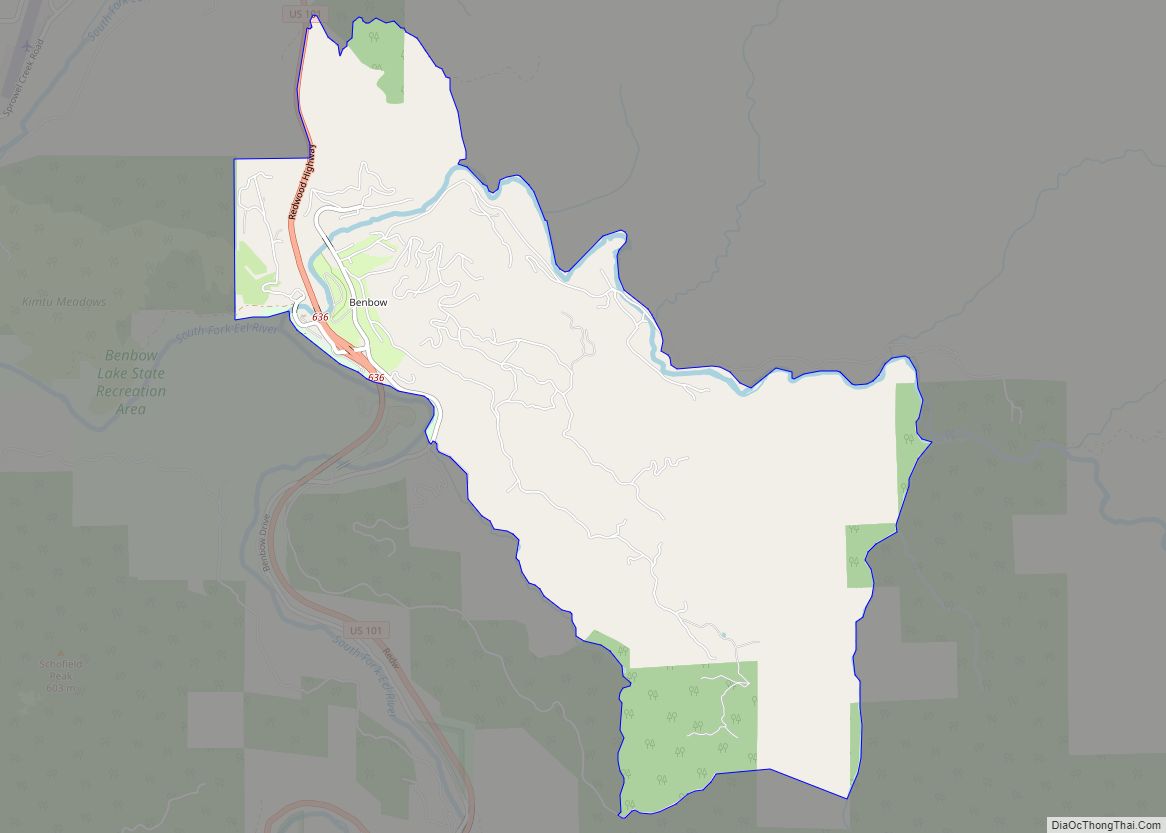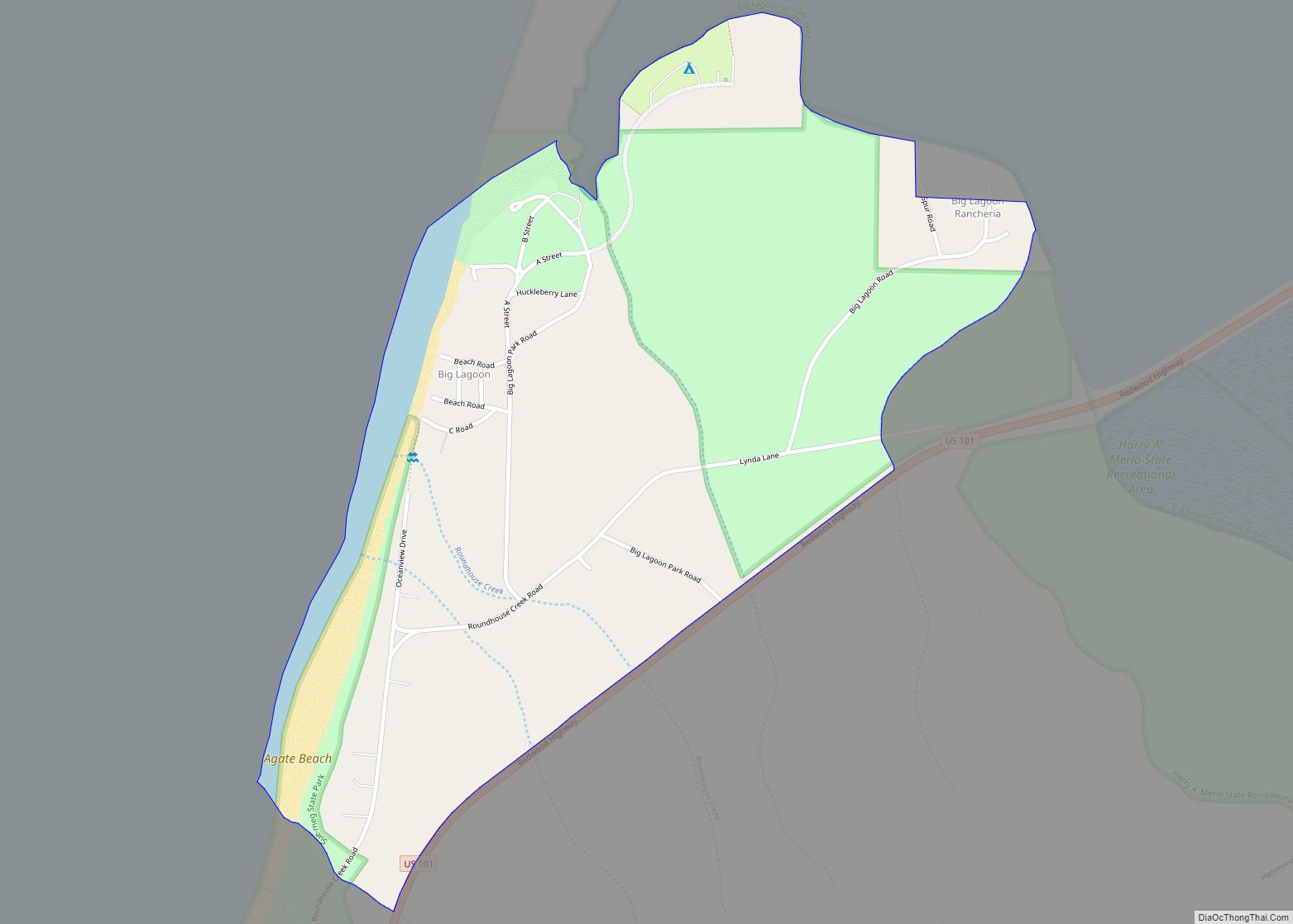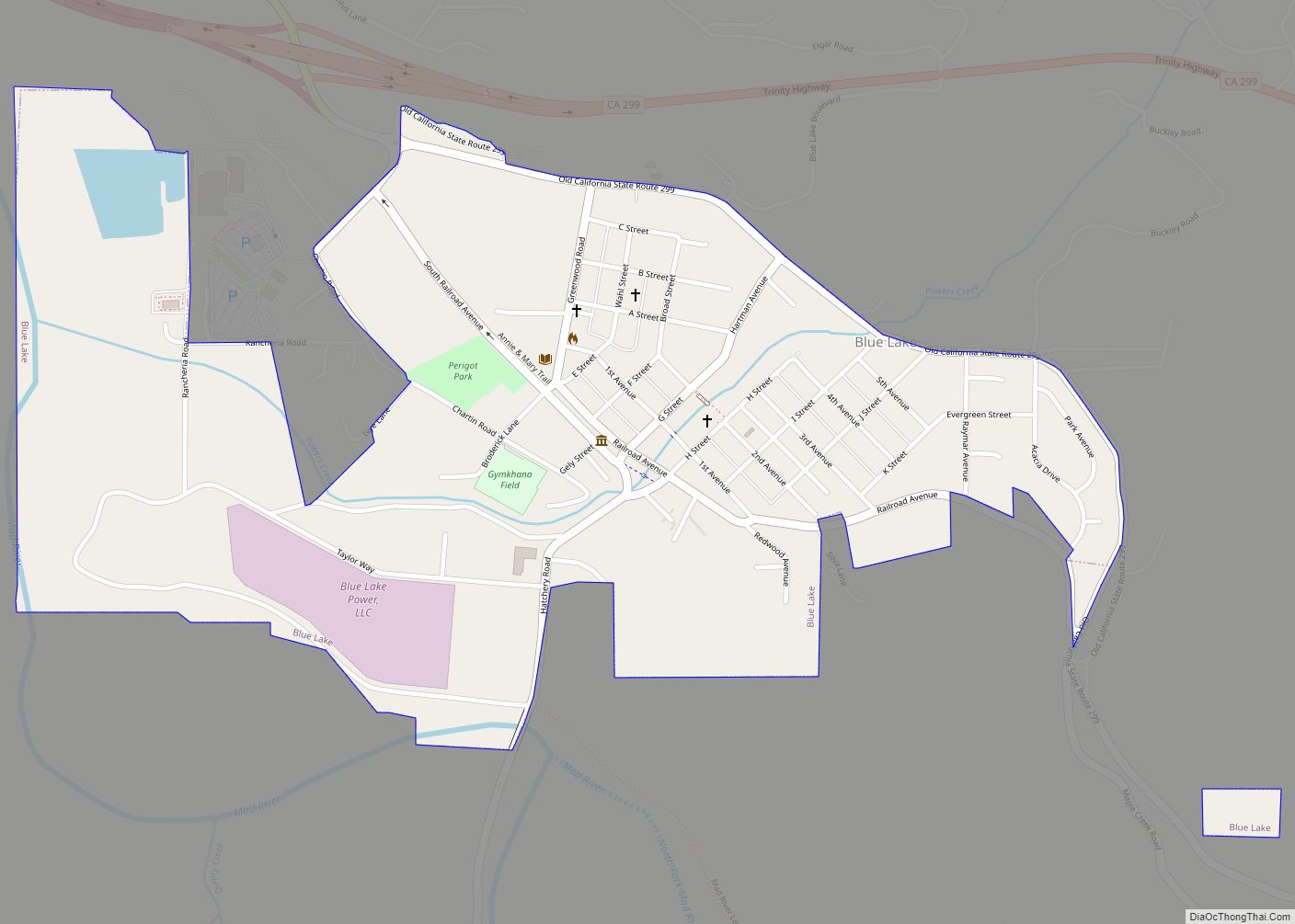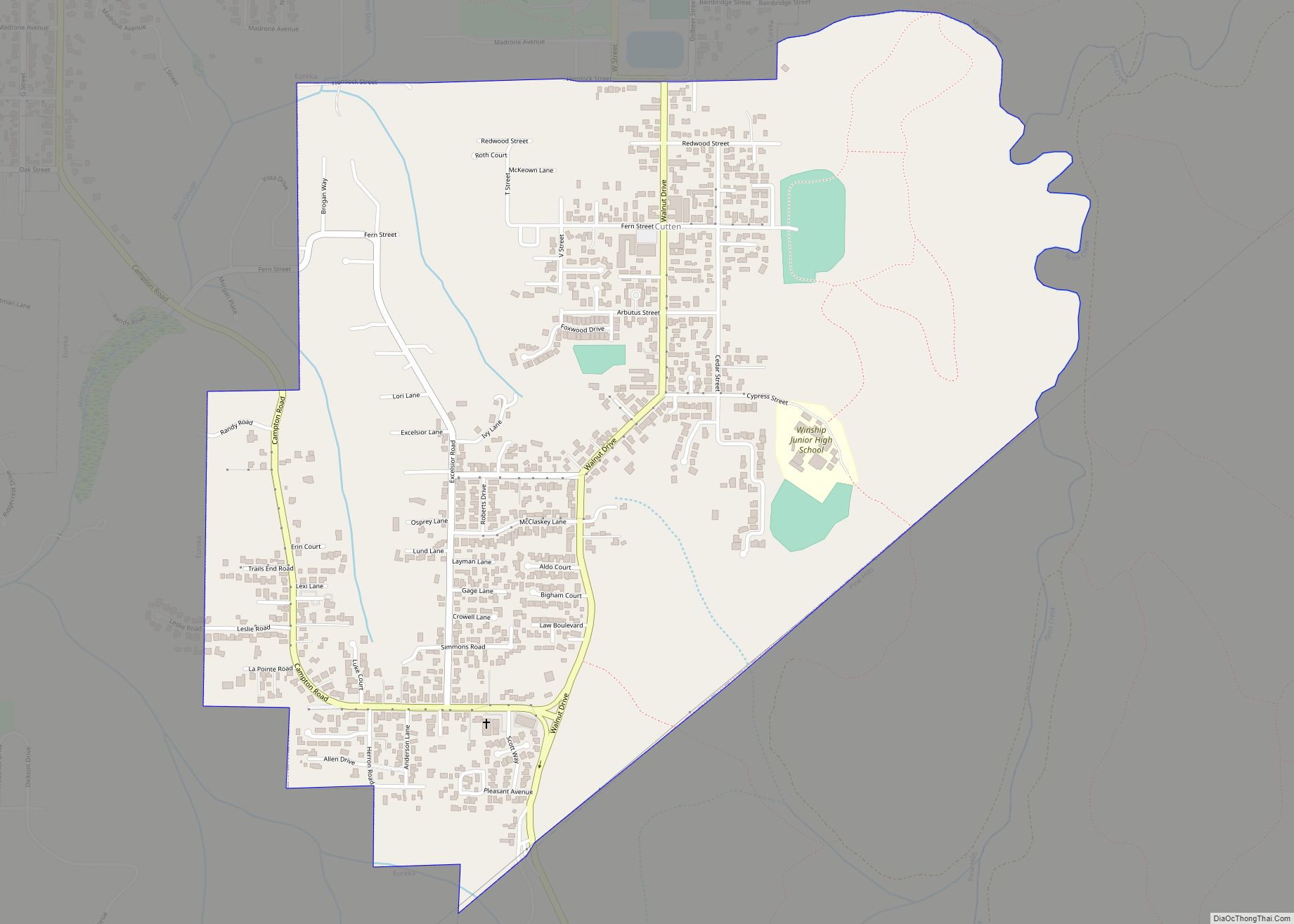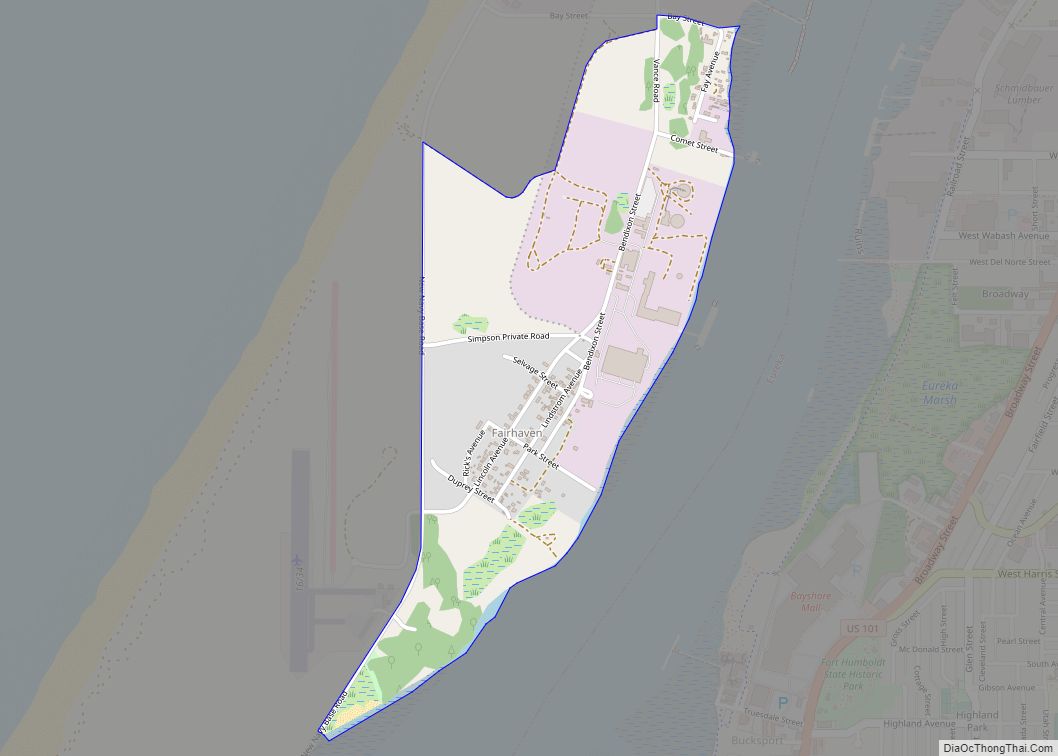Scotia, formerly known as Forestville until 1888, is a census-designated place in Humboldt County, California. It is located on the Eel River along U.S. Route 101, 8.5 miles (13.7 km) southeast of Fortuna and 244 miles (393 km) north of San Francisco. Scotia has a population of 850 (2010 census).
Scotia is a company town founded by the Pacific Lumber Company (PALCO) to house workers for the lumber industry. The town was entirely owned by PALCO until 2008, following the corporation’s declaration of bankruptcy. While it is home to hundreds of past or present lumber mill employees and their dependents, a process is underway to divide the homes into lots for sale.
| Name: | Scotia CDP |
|---|---|
| LSAD Code: | 57 |
| LSAD Description: | CDP (suffix) |
| State: | California |
| County: | Humboldt County |
| Elevation: | 194 ft (59 m) |
| Total Area: | 0.842 sq mi (2.179 km²) |
| Land Area: | 0.746 sq mi (1.932 km²) |
| Water Area: | 0.096 sq mi (0.247 km²) 11.3% |
| Total Population: | 681 |
| Population Density: | 810/sq mi (310/km²) |
| ZIP code: | 95565 |
| Area code: | 707 |
| FIPS code: | 0670518 |
| Website: | www.townofscotia.com |
Online Interactive Map
Click on ![]() to view map in "full screen" mode.
to view map in "full screen" mode.
Scotia location map. Where is Scotia CDP?
History
Scotia was founded in 1863 as Forestville by the Pacific Lumber Company to house workers for its lumber industry operations in the area. The town was formed following the winter flood of 1861–1862; that flood level was not observed again until 1955. The Eel River crested at a gauge height of 72 feet (10.1 feet higher than 1955) on December 23, 1964. Eighteen-million board feet of redwood logs and 23-million board feet of lumber were washed out of the Scotia sawmill and scattered along the lower river and Pacific coast to the mouth of the Columbia River.
The Humboldt Bay and Eel River Railroad connected the town to Humboldt Bay in 1885. This railway became part of Atchison, Topeka and Santa Fe Railway subsidiary San Francisco and Northwestern Railway in 1903, and was linked to the national rail network by completion of the Northwestern Pacific Railroad in 1914.
Forestville was renamed 25 years later in 1888 to prevent confusion with a community in Sonoma County of the same name. It is said that the new name was chosen because it was populated by many residents originated from New Brunswick and Nova Scotia (Canada), and that the name Scotia was chosen by a coin toss, with the alternative being Brunswick. The first post office in the town opened the same year.
Life in early 20th century Scotia is documented by the Neill Photo Albums, which feature 292 photographs of the Neill family, townspeople, and daily life in the company town. Images reflect everyday life and hardships, local residents and homes, vacations, trips into the surrounding forest, and Pacific Lumber Company’s mill and work operations, between the years of 1908 and 1913. The Neil Photo Album is available for viewing at Humboldt State University’s Special Collections. During the mid-to-late 19th century, Scotia was one of numerous company towns established across the Pacific Northwest, many of which closed down during the Great Depression in the 1930s. Scotia was one of the handful of company towns to survive this period and further into the 20th century, and most of the existing houses were built between the 1920s and 1950s.
The 1992 Cape Mendocino earthquakes caused widespread damage in Humboldt County, including Scotia, when three major earthquakes in less than a 24-hour span. The first was a magnitude 7.2 quake at 11:06 a.m. on April 25, causing mill damage that took months to repair. The second quake, a 6.5, at 12:41 a.m. on April 26, caused the most damage. A fire started in the Hoby’s Market shopping center exploded, with firefighters trying to extinguish the fire the rest of the night, but the entire shopping center was destroyed. The earthquake also caused extensive damage to the North Court area of Scotia, with numerous homes damaged and gas leakages from a damaged gas line. Pacific Gas & Electric responded to repair the gas line in North Court while all the residents were gathered on a grassy hill for the entire night. The third quake at 4:26 a.m. on April 26, measuring 6.7, compounded damage from the previous two quakes. Scotia was temporarily without water and electricity, and PALCO rebuilt the shopping center that had been destroyed.
PALCO bankruptcy
PALCO announced in 2006 a desire to sell the homes (to the employees and retirees who currently live there) and commercial property. The company suggested that Scotia become part of Rio Dell, a small neighboring town located directly across the Eel River. Additionally, the need for employees had fallen from over 1,000 to around 300, in part due to a lack of logs and also from automation. On January 18, 2007, PALCO filed for bankruptcy protection under Chapter 11, Title 11, United States Code. On July 8, 2008, the court issued its judgment and order confirming the Plan of Reorganization submitted by secured creditor Marathon Structured Finance Fund (Marathon), joined by Mendocino Redwood Company (MRC). Pursuant to that plan, most of the Town of Scotia’s real and personal assets transferred to a reorganized entity wholly owned by Marathon, Town of Scotia Company, LLC (TOS). Under the plan, the active Scotia sawmill facilities and other ancillary office buildings will transfer to a second reorganized entity, Humboldt Redwood Company (HRC) in which Marathon and MRC both have interests (United States Bankruptcy Court for the Southern District of Texas, Corpus Christi Division as “Case No. 07-20027-C-11” under the consolidated title, In Re Scotia Development LLC, et al., Debtors.) The Town of Scotia LLC has pursued a General Plan Amendment/ Zone Reclassification and Final Map Subdivision application. Subdivision requires fulfillment of conditions of approval which include formation of a community services district or other public entity to manage utilities. Service district formation requires approval by the Humboldt County Local Agency Formation Commission, which has a pending application. The purpose of the subdivision is to create individual parcels for existing residential and commercial properties, and public facilities. The proposed subdivision would allow for the sale of residential and commercial lots (all of which are currently owned and operated by the Town of Scotia LLC) to individual property owners.
Scotia Road Map
Scotia city Satellite Map
See also
Map of California State and its subdivision:- Alameda
- Alpine
- Amador
- Butte
- Calaveras
- Colusa
- Contra Costa
- Del Norte
- El Dorado
- Fresno
- Glenn
- Humboldt
- Imperial
- Inyo
- Kern
- Kings
- Lake
- Lassen
- Los Angeles
- Madera
- Marin
- Mariposa
- Mendocino
- Merced
- Modoc
- Mono
- Monterey
- Napa
- Nevada
- Orange
- Placer
- Plumas
- Riverside
- Sacramento
- San Benito
- San Bernardino
- San Diego
- San Francisco
- San Joaquin
- San Luis Obispo
- San Mateo
- Santa Barbara
- Santa Clara
- Santa Cruz
- Shasta
- Sierra
- Siskiyou
- Solano
- Sonoma
- Stanislaus
- Sutter
- Tehama
- Trinity
- Tulare
- Tuolumne
- Ventura
- Yolo
- Yuba
- Alabama
- Alaska
- Arizona
- Arkansas
- California
- Colorado
- Connecticut
- Delaware
- District of Columbia
- Florida
- Georgia
- Hawaii
- Idaho
- Illinois
- Indiana
- Iowa
- Kansas
- Kentucky
- Louisiana
- Maine
- Maryland
- Massachusetts
- Michigan
- Minnesota
- Mississippi
- Missouri
- Montana
- Nebraska
- Nevada
- New Hampshire
- New Jersey
- New Mexico
- New York
- North Carolina
- North Dakota
- Ohio
- Oklahoma
- Oregon
- Pennsylvania
- Rhode Island
- South Carolina
- South Dakota
- Tennessee
- Texas
- Utah
- Vermont
- Virginia
- Washington
- West Virginia
- Wisconsin
- Wyoming
